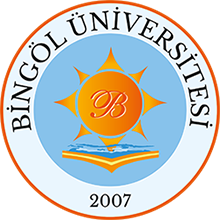Âl-İ İmrân sûresindeki kırâat farklılıkları ve anlama etkisi
Abstract
ÖZET
Kur’ân-ı Kerîm, Arapçanın dil yapısının ve Arap yazısının henüz teşekkül
etmesinin bir sonucu olarak rivayet tarikleriyle de desteklenen çeşitli okuyuş
farklılıklarını içermektedir. Bu okuyuş farklılıkların Kur’ân ayetlerinin anlamına
etkisi, Âl-i İmrân sûresi özelinde çalışmanın konusu olarak belirlenmiştir. Nitel
yöntemin doküman analizi tekniği kullanılarak yapılan bu çalışma giriş, iki bölüm ve
sonuçtan oluşturlmuştur. Giriş bölümünde araştırmanın konusu, önemi, metodu ve
araştırmada kullanılan kaynakların değerlendirilmesine yer verilmiştir. Birinci
bölümde kırâat ilmi, kırâatlerin sınıflandırılması, kırâat farklılıkları ve kırâat ilminin
tarihi serüveni incelenmiştir. İbn Mücâhid’in bu ilmin teşekkülündeki ve
sistemleşmesindeki rolünün bir hayli etkin olduğu görülmüştür İkinci bölümde ise
genel hatlarıyla Âl-i İmrân sûresi, bu sûredeki sahih veya şâz türünden kırâat
farklılıkları ve bunların anlama etkileri üzerinde durulmuştur. Sûrede usûlî ve ferşî
şeklinde değerlendirilen farklılıkların her iki kısmından bir hayli bulunduğu ve bu iki
kısım farklıklıklardan sadece ferşi farklılıkların bazen anlama etki ettiği tespit
edilmiştir. ABSTRACT
As a result of the linguistic structure of Arabic and the formation of the Arabic
script, the Qur'an contains various reading differences supported by narrations. The
effect of these reading differences on the meaning of the Qur'anic verses has been
determined as the subject of the study in the special case of Surah Âl-i İmrân. This
study, which was conducted using the document analysis technique of the qualitative
method, consists of an introduction, two chapters and a conclusion. In the introduction,
the subject, importance, method and evaluation of the sources used in the research are
given. In the first chapter, the science of qiraat, the classification of qiraat, the
differences of qiraat and the historical adventure of the science of qiraat were analyzed.
Ibn Mujāhid's role in the formation and systematization of this science has been seen
to be very effective. In the second part, in general terms, the Surah Âl-i İmrân, the
differences of the sahih (true to the original) or shazih (leave the rule) qiraat in this
Surah and their effects on the understanding of this Surah were emphasized. It has
been determined that there are a lot of both parts of the differences, which are evaluated
as usuli (procedural) and fershi (structural), in the surah and that only fershi differences
sometimes affect the meaning.
Collections
- Kıraat İlmi [5]

DSpace@BİNGÖL by Bingöl University Institutional Repository is licensed under a Creative Commons Attribution-NonCommercial-NoDerivs 4.0 Unported License..













